elemintalshop
Akan Sawfish Goldweight & Human Right to Water: Women at Hand-Pump Well 10 CFA Francs West African States Authentic Coin Money for Jewelry
Akan Sawfish Goldweight & Human Right to Water: Women at Hand-Pump Well 10 CFA Francs West African States Authentic Coin Money for Jewelry
Couldn't load pickup availability
Akan Sawfish Goldweight & Human Right to Water: Women at Hand-Pump Well 10 CFA Francs West African States Authentic Coin Money for Jewelry
Commemorative issue: Food and Agriculture Organization of the United Nations
Obverse: Akan Goldweight, at center: sawfish-shaped brass weight of the Akan/Ashanti people for weighing gold dust. Denomination dividing the issuer name above and below.
Lettering: BANQUE CENTRALE
10 FRANCS
ETATS DE L'AFRIQUE DE L'OUEST
Translation: Central Bank
10 Francs of the West African States
Reverse: Two women and a child getting water at a hand pump. UN CESCR: “The human right to water is indispensable for leading a life in human dignity.”
Features
Issuer Western African States
Period Central Bank of West African States (1958-date)
Type Circulating commemorative coin
Years 1981-2020
Value 10 Francs CFA
10 XOF = 0.018 USD
Currency CFA franc (1958-date)
Composition Aluminium-bronze
Weight 4 g
Diameter 23.5 mm
Thickness 1.57 mm
Shape Round
Orientation Coin alignment ↑↓
Number N# 1799
References KM# 10, Schön# 18
Wikipedia:
Akan goldweights, (locally known as mrammou), are weights made of brass used as a measuring system by the Akan people of West Africa, particularly for wei and fair-trade arrangements with one another. The status of a man increased significantly if he owned a complete set of weights. Complete small sets of weights were gifts to newly wedded men. This insured that he would be able to enter the merchant trade respectably and successfully.
Beyond their practical application, the weights are miniature representations of West African culture items such as adinkra symbols, plants, animals and people.
Scholars use the weights, and the oral traditions behind the weights, to understand aspects of Akan culture that otherwise may have been lost. The weights represent stories, riddles, and code of conducts that helped guide Akan peoples in the ways they live their lives. Central to Akan culture is the concern for equality and justice; it is rich in oral histories on this subject. Many weights symbolize significant and well-known stories. The weights were part of the Akan's cultural reinforcement, expressing personal behaviour codes, beliefs, and values in a medium that was assembled by many people.
....The naming of the weights is incredibly complex, as a complete list of Akan weights had more than sixty values, and each set had a local name that varied regionally.
Collections of weights
Some estimate that there are 3 million goldweights in existence. ... Many of the largest museums of in the US and Europe have sizable collections of goldweights. The National Museum of Ghana, the Musée des Civilisations de Côte d'Ivoire in Abidjan, Derby Museum and smaller museums in Mali all have collections of weights with a range of dates.
Manufacture of the weights
In the past, each weight was meticulously carved, then cast using the ancient technique of lost wax. As the Akan culture moved away from using gold as the basis of their economy, the weights lost their cultural day-to-day use and some of their significance. Their popularity with tourists has created a market that the locals fill with mass-produced weights. These modern reproductions of the weights have become a tourist favorite. Rather than the simple but artistic facial features of the anthropomorphic weights or the clean, smooth lines of the geomorphic weights, modern weights are unrefined and mass-produced look. The strong oral tradition of the Akan is not included in the creation of the weights; however, this does not seem to lessen their popularity.
The skill involved in casting weights was enormous; as most weights were less than 2½ ounces and their exact mass was meticulously measured. They were a standard of measure to be used in trade, and had to be accurate. The goldsmith, or adwumfo, would make adjustments if the casting weighed too much or too little. Even the most beautiful, figurative weights had limbs and horns removed, or edges filed down until it met the closest weight equivalent. Weights that were not heavy enough would have small lead rings or glass beads attached to bring up the weight to the desired standard. There are far more weights without modifications than not, speaking to the talent of the goldsmiths. Most weights were within 3% of their theoretical value; this variance is similar to those of European nest weights from the same time.
Early weights display bold, but simple, artistic designs. Later weights developed into beautiful works of art with fine details. However, by the 1890s (Late Period) the quality of both design and material was very poor, and the abandonment of the weights quickly followed.
*********
Wikipedia:
Sawfish, also known as carpenter sharks, are a family of rays characterized by a long, narrow, flattened rostrum, or nose extension, lined with sharp transverse teeth, arranged in a way that resembles a saw. They are among the largest fish with some species reaching lengths of about 7–7.6 m (23–25 ft). They are found worldwide in tropical and subtropical regions in coastal marine and brackish estuarine waters, as well as freshwater rivers and lakes.
.....The Akan people of Ghana see sawfish as an authority symbol. There are proverbs with sawfish in the African language Duala. In some other parts of coastal Africa, sawfish are considered extremely dangerous and supernatural, but their powers can be used by humans as their saw retains the powers against disease, bad luck and evil. Among most African groups consumption of meat from sawfish is entirely acceptable, but in a few (in West Africa the Fula, Serer and Wolof people) it is taboo. In the Niger Delta region of southern Nigeria, the saws of sawfish (known as oki in Ijaw and neighbouring languages) are often used in masquerades.
**********
Wikipedia:
A village pump can provide safe drinking water.
In November 2002, the United Nations Committee on Economic, Social and Cultural Rights asserted that access to clean, safe water goes beyond the classification of water as an economic commodity. The committee stressed the fundamental right of sufficient access to clean water for both domestic and personal use. “The human right to water is indispensable for leading a life in human dignity.”
Village level operation and maintenance
VLOM, meaning Village Level Operation and Maintenance, is a term first used during the UNDP and World Bank Rural Water Supply Hand Pumps Project. This project lasted from 1981 to 1991, and studied the availability and maintenance of hand pump systems. 40 kinds of hand pumps were analyzed in laboratories, and the performance of 2700 hand pumps was analyzed in the field. The study established that centralized maintenance structure was a cause of many problems in hand pump programs, and that maintenance at the village level is best.
Hand pump development projects
An example of a Bank funded project that highlights many issues of hand pumps is the 1992 Mali Rural Supply Project. The project brought approximately 230 rural villages inclined towards periods of drought, and 228,000 people access to safe water. The project is notable in its attempt to bring responsibility for the upkeep of the pumps to the villages themselves. The complexity of the pumps is a fundamental problem for all programs of this kind, as well as the quality of the pumps given the heavy demands of a village. A 1994 study, also Bank funded, of the endurance of hand pumps in Africa showed that only 41 to 51 percent of hand pumps were still functioning. The Mali Rural Supply Project did positively affect the longevity of hand pumps by doing the following: establishing local depots of spare parts, training individuals to maintain pumps, scheduling inspections from officials of the project, forming local committees and recruiting volunteers.
************
Wikipedia:
The West African CFA franc (French: franc CFA; Portuguese: franco CFA or simply franc, ISO 4217 code: XOF) is the currency of eight independent states in West Africa: Benin, Burkina Faso, Côte d'Ivoire, Guinea-Bissau, Mali, Niger, Senegal and Togo. These eight countries had a combined population of 105.7 million people in 2014, and a combined GDP of US$128.6 billion (as of 2018).
The acronym CFA stands for Communauté Financière Africaine ("African Financial Community"). The currency is issued by the Central Bank of West African States (BCEAO; Banque Centrale des États de l'Afrique de l'Ouest), located in Dakar, Senegal, for the members of the West African Economic and Monetary Union (UEMOA; Union Économique et Monétaire Ouest Africaine). The franc is nominally subdivided into 100 centimes but no centime denominations have been issued.
The Central African CFA franc is of equal value to the West African CFA franc, and is in circulation in several central African states. They are both called the CFA franc.
Share
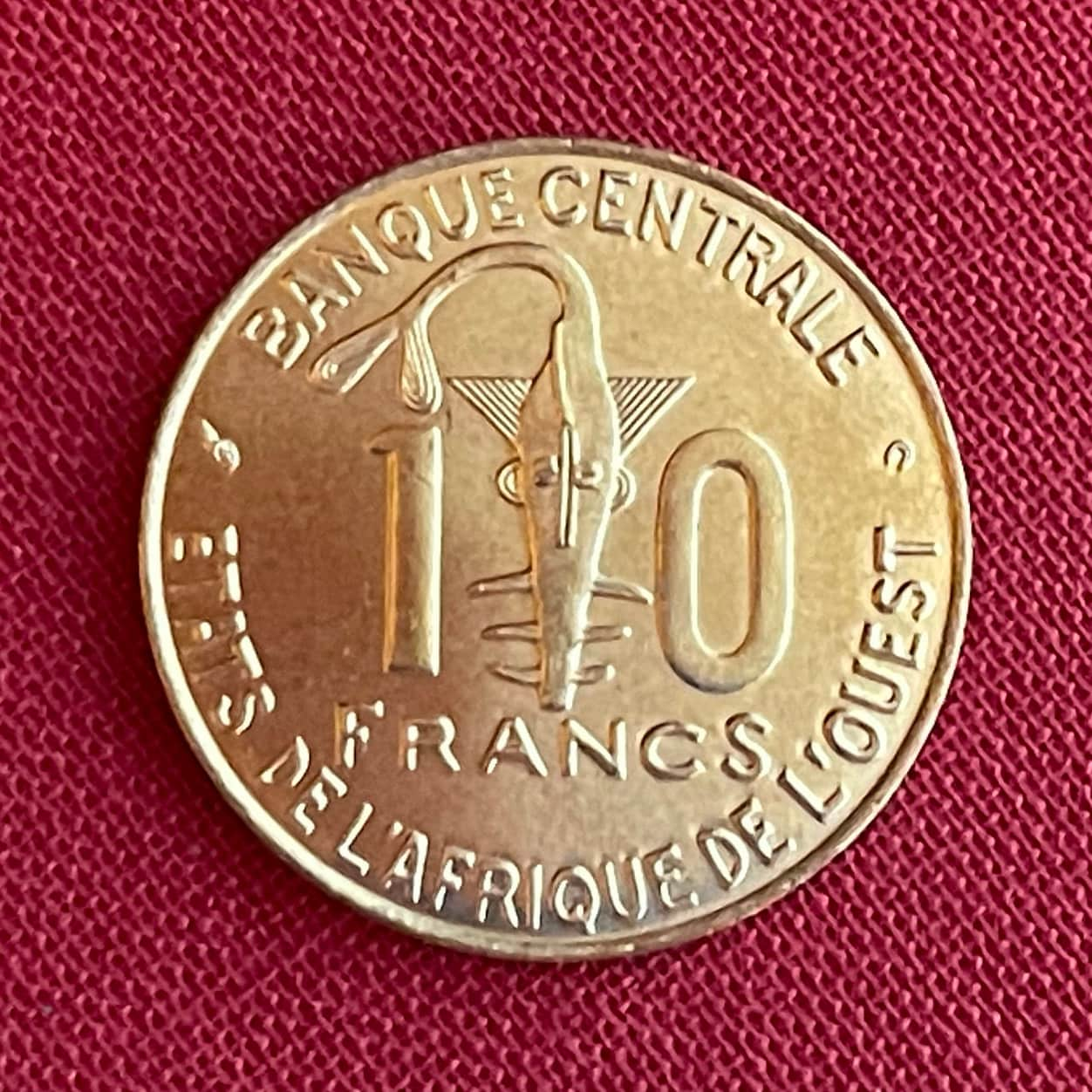
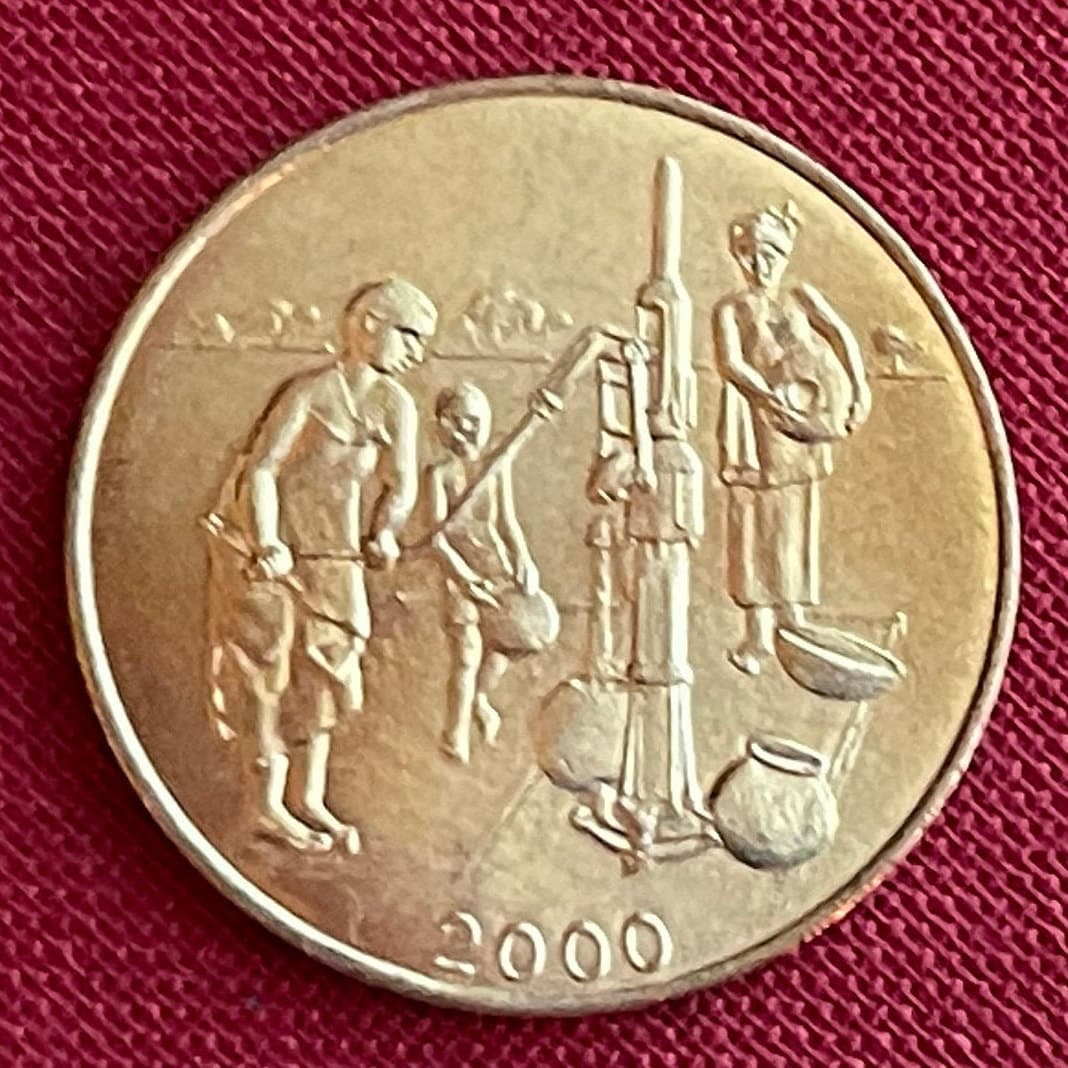
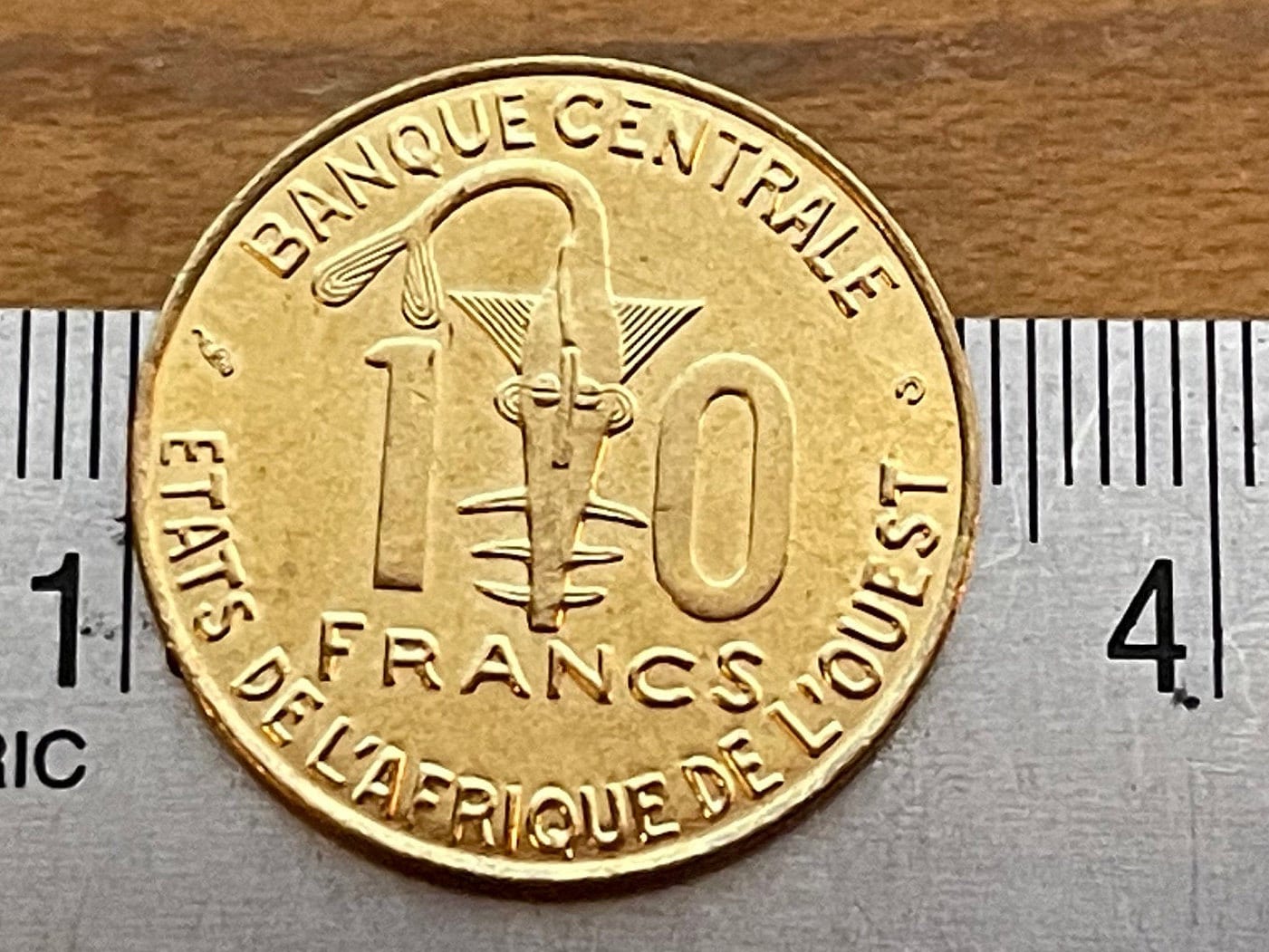
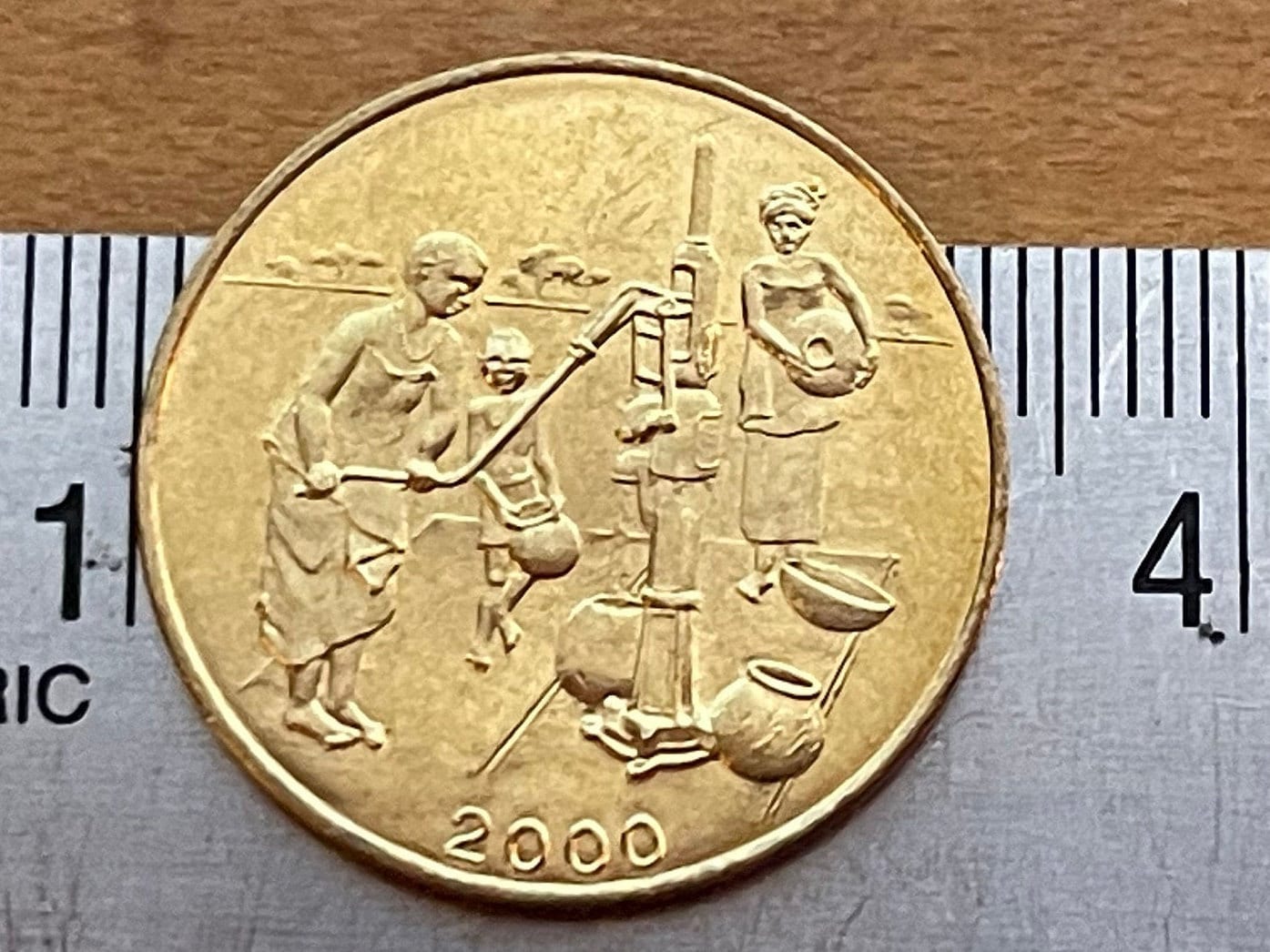
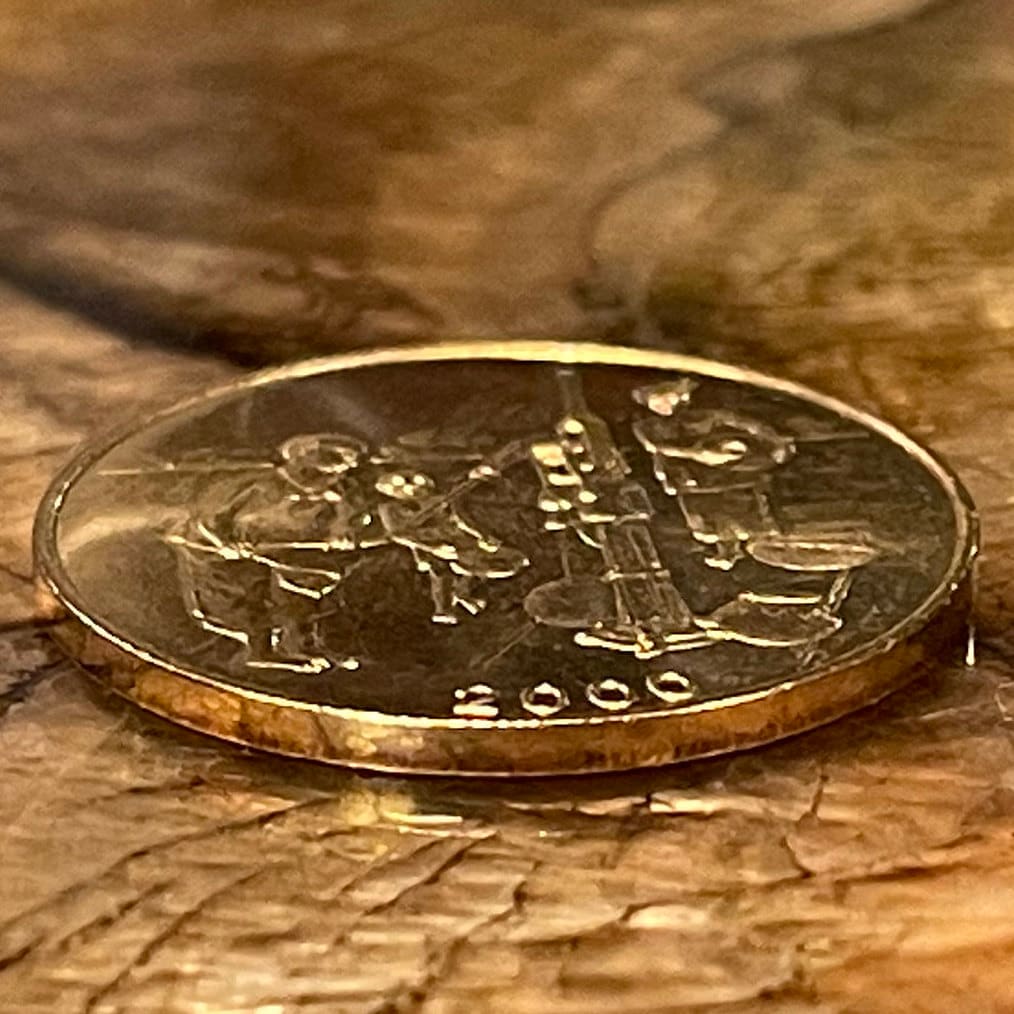
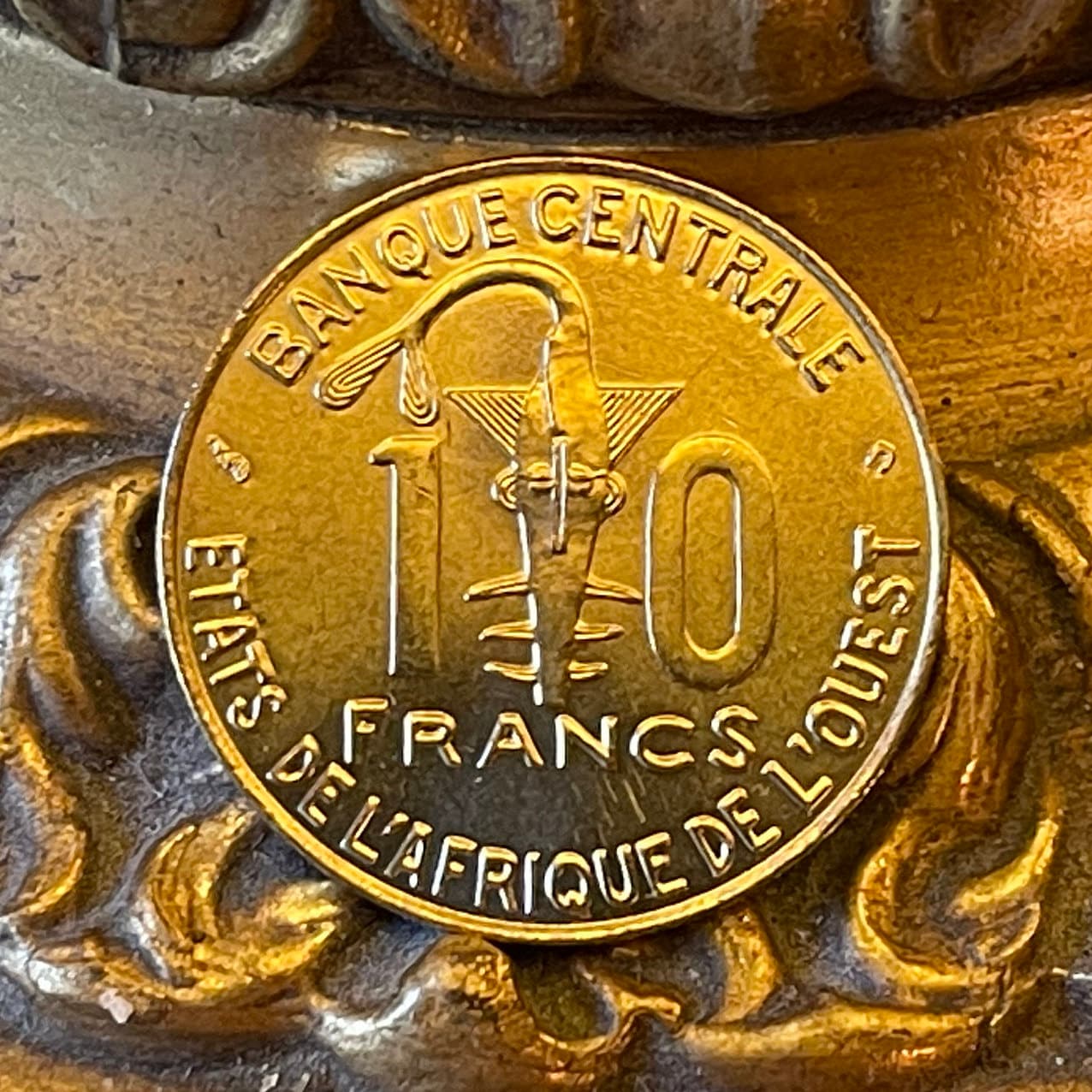
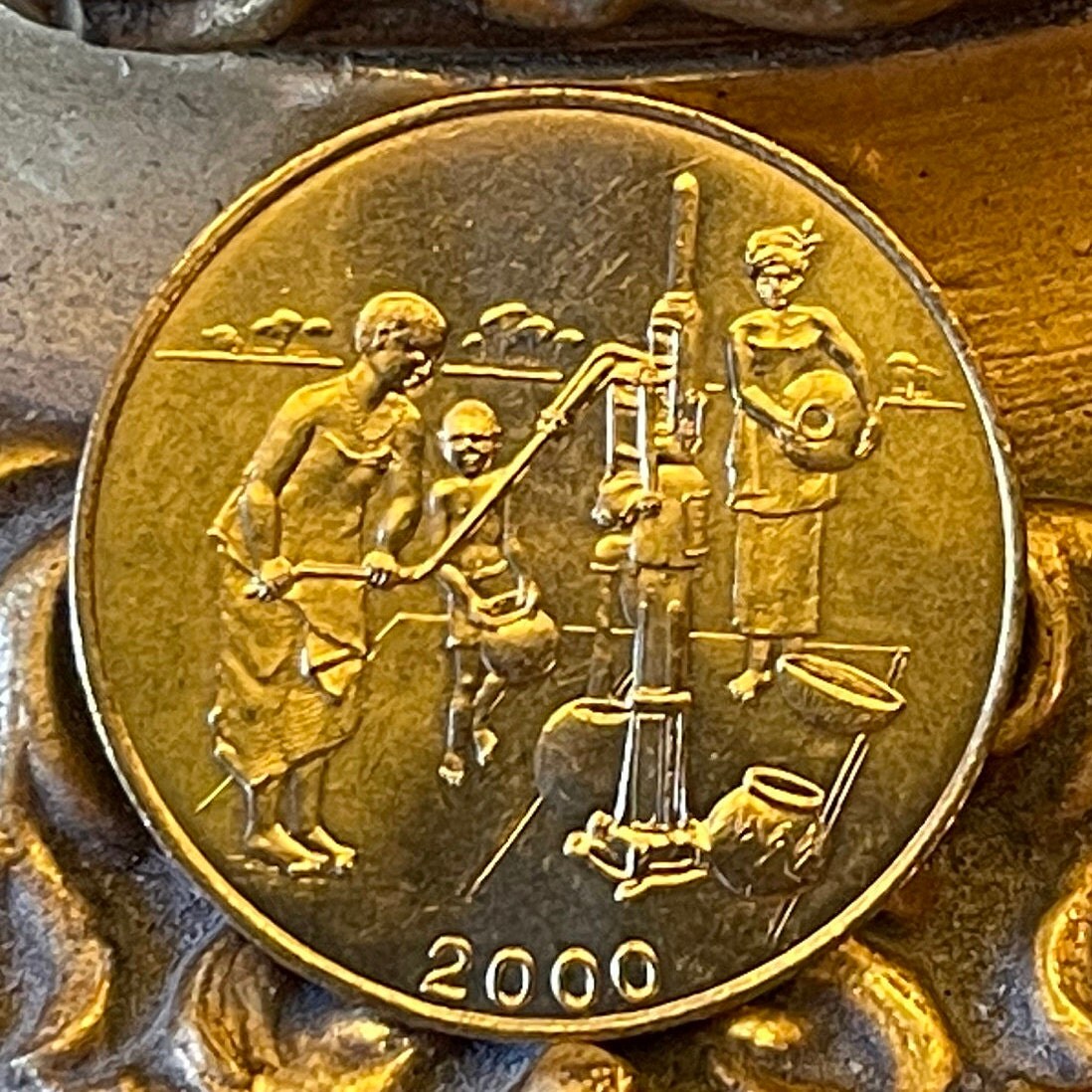
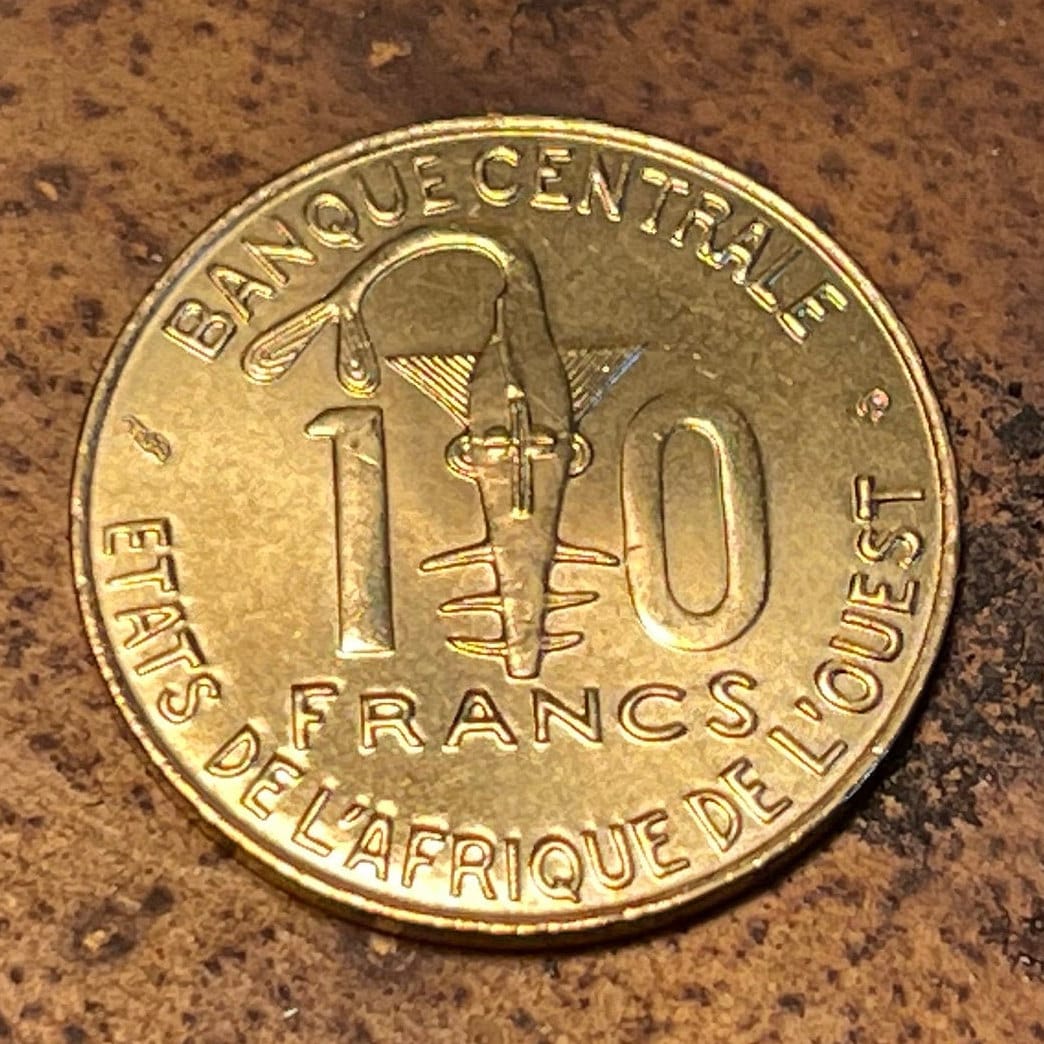
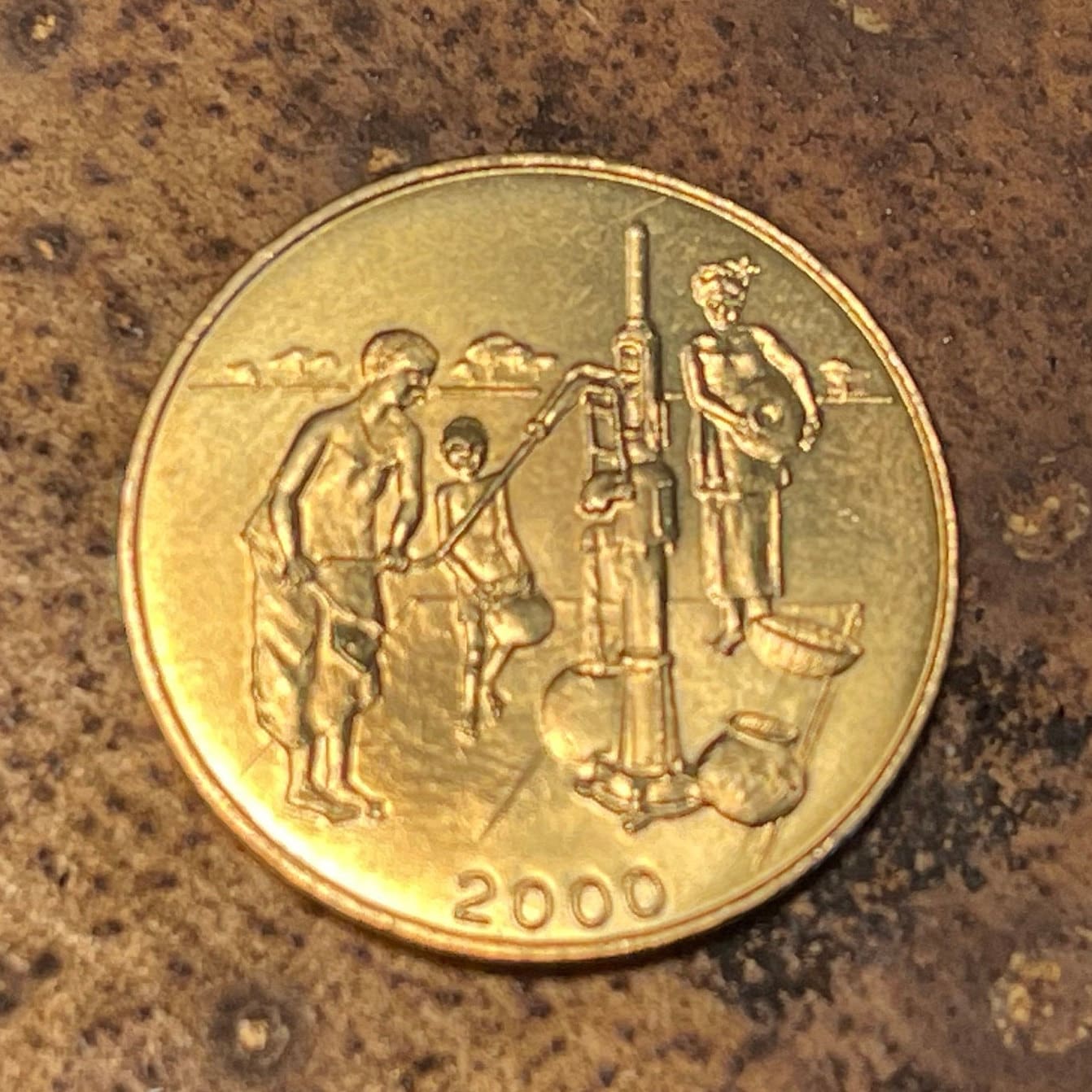
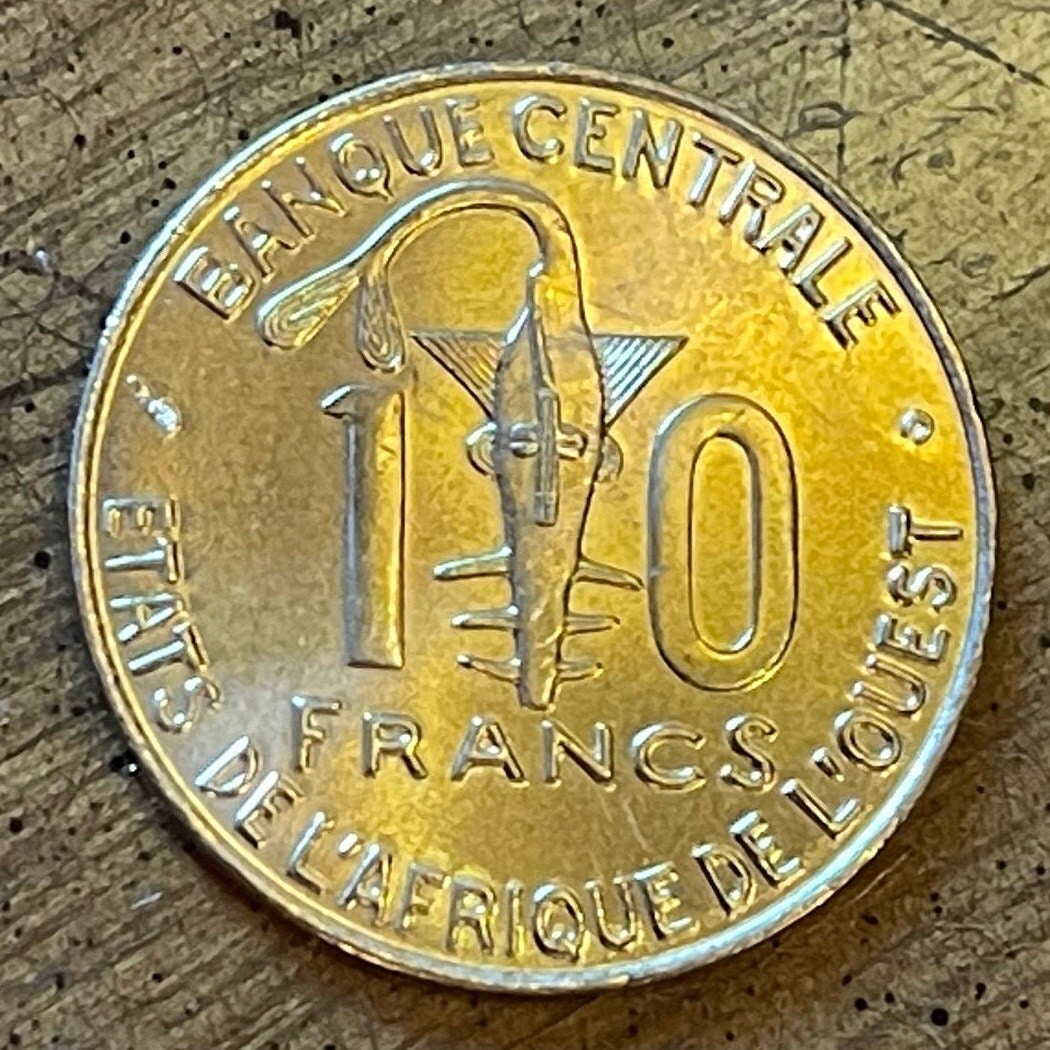
I would highly recommend this seller. I've bought from them before and they always have an amazing selection of coins.
Very nice! I'm excited to add this coin to my collection!
Very nice coins! So glad to have these in my collection now!!
5 stars review from Mechio
I used it in a collage that I'm creating.









